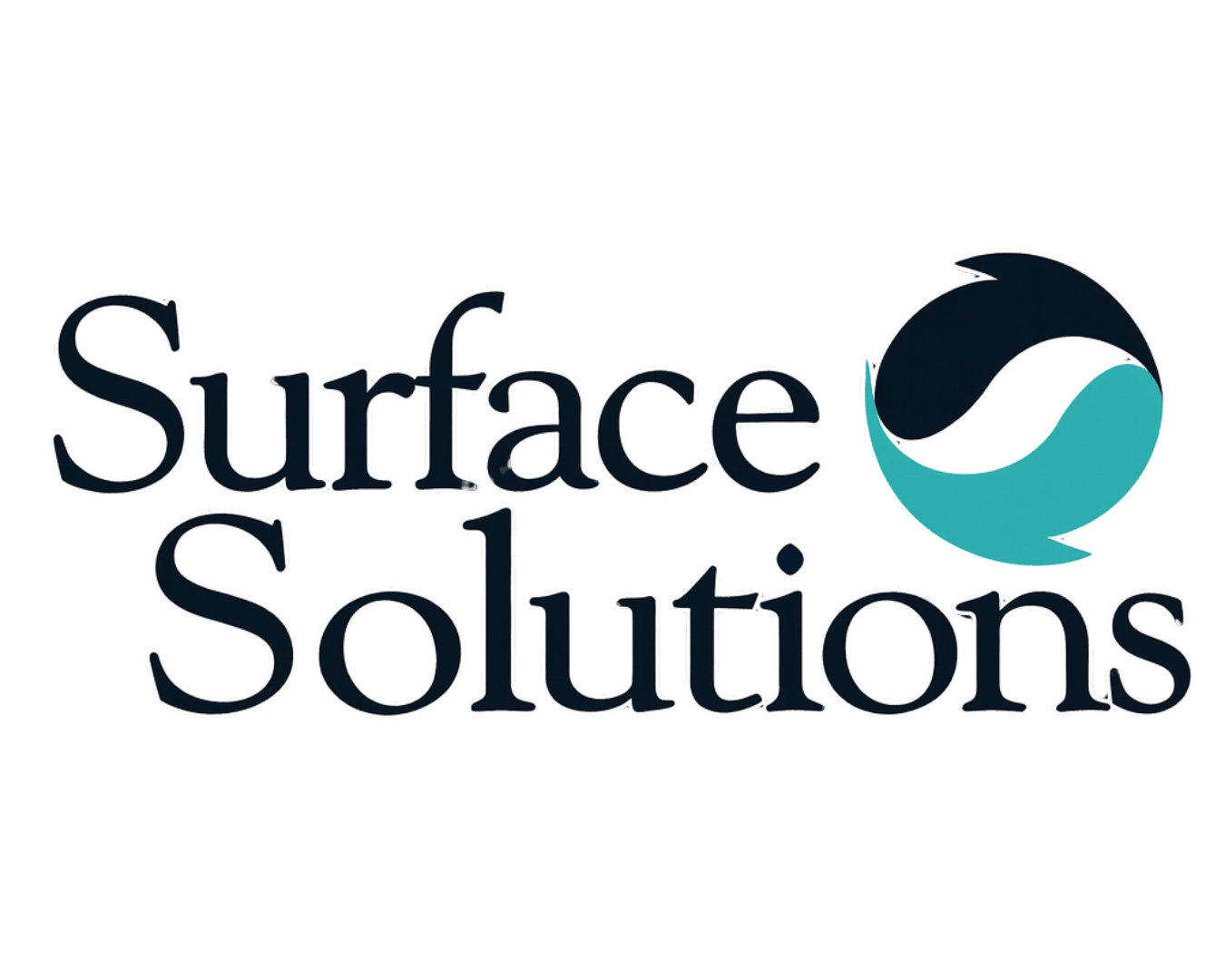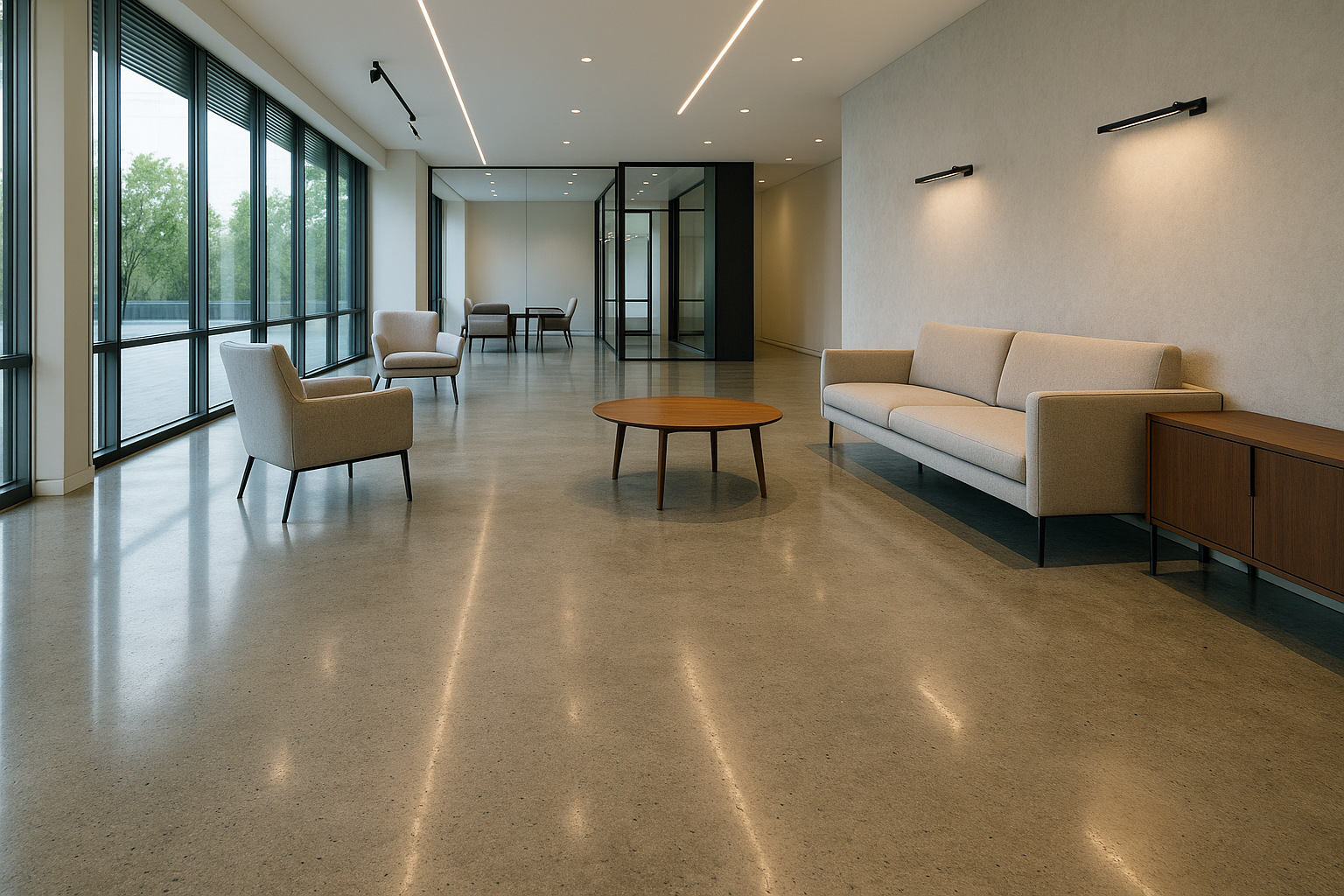The Evolution of Concrete as a Design Element
Fifteen years ago, polished concrete was chosen primarily for its practicality. Today, it’s one of the most sought-after surfaces in modern design, often replacing tile, vinyl, or even stone in high-end projects.
What changed?
- Advances in grinding and densifying technology make it possible to achieve glass-like finishes or matte textures.
- Custom dyes, aggregates, and saw cuts turn a once utilitarian material into a creative statement.
- Sustainability requirements have driven designers to embrace low-VOC, long-lasting materials with minimal waste.
Concrete is no longer the background—it’s the feature.
Why Polished Concrete Is Dominating Commercial Interiors
1. Aesthetic Versatility
Polished concrete adapts to any brand identity or environment. With stain colors, aggregate exposure levels, and sheen options ranging from satin to mirror gloss, it can look industrial, refined, or luxurious.
Retailers like Nike, Apple, and Tesla have embraced polished concrete for its sleek uniformity and light reflectivity — perfect for creating immersive shopping experiences.
2. Sustainability & LEED Points
Polishing utilizes the existing slab, reducing the need for additional flooring materials. It also contributes to LEED certification by lowering embodied carbon and improving reflectivity for energy-efficient lighting.
3. Durability & Low Maintenance
Unlike coatings that chip or peel, polished concrete is integral—it’s part of the slab itself. When properly densified and sealed, it resists stains, abrasion, and traffic wear, lasting decades with minimal upkeep.
4. Cost Efficiency Over Time
While the upfront cost can be higher than some options, its longevity and reduced maintenance make it one of the most cost-effective flooring systems over its lifecycle.
5. Brand Consistency Across Locations
For multi-location businesses, polished concrete ensures consistent appearance and performance across stores or offices, regardless of regional conditions.
The Design Process: From Slab to Statement
Creating architectural-grade polished concrete is both science and art. The process typically includes:
- Assessment: Evaluating the existing slab’s hardness, moisture, and flatness.
- Grinding: Progressive steps (30–3000 grit) to expose aggregate and refine texture.
- Densification: Chemical hardeners are applied to improve durability and reduce dusting.
- Polishing: High-speed resin pads bring out desired sheen — matte to high-gloss.
- Staining or Dyeing: Optional decorative color applied for brand or aesthetic consistency.
- Sealing & Burnishing: Provides protection and enhances reflectivity.
The end result is a floor that functions like stone, but is fully customized to the space.
Polished Concrete in Action
Corporate Offices
Polished concrete pairs perfectly with glass, steel, and wood. It creates an open, reflective environment that enhances natural light and modern minimalism.
Retail & Showrooms
Its seamless appearance and light bounce make products the visual focus, not the floor. Brands use finishes to evoke everything from ruggedness to luxury.
Restaurants & Hospitality
Stain resistance and design flexibility make polished concrete an ideal match for high-traffic spaces where presentation and cleanliness matter equally.
Educational & Public Spaces
With high durability, low maintenance, and sustainability credits, it’s now a go-to choice for schools, museums, and civic buildings.
Maintaining Beauty Over Time
Even though polished concrete is extremely resilient, periodic maintenance helps retain its luster. Surface Solutions offers long-term maintenance plans that include:
- Burnishing and resealing annually or semi-annually
- Joint and crack repair as needed
- pH-balanced cleaning to prevent surface dulling
This keeps floors looking as new as the day they were installed—even after years of heavy use.
The Future of Polished Concrete
Designers are experimenting with techniques like
- Embedded LED lighting for architectural accents
- Textured overlays and micro-toppings
- Sustainable binders to reduce cement use
- Hybrid systems combining polish and pigment for branding
As the material evolves, polished concrete will continue redefining what’s possible—merging luxury aesthetics with industrial performance.
📞 Call 877-CSTM-FLR
📧 Email carolina@cstmflr.com 🌐 Visit www.cstmflr.com


.png)
